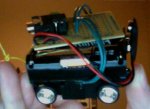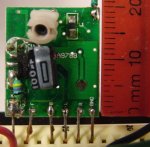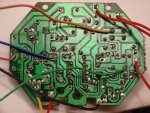I'm trying to control a small micro rc car using picaxe. The car is driven by 4 mosfets that control forward, reverse, left and right. I plan on connecting 4 output pins to npn transistors to bring one leg of the mosfet high, and powering that motor. Is it possible to bring two output high at the same time so that I can go forward and left/right at the same time? Or is my best choice to just wire my turning transistors to forward and left or right and give up on being able to steer in reverse?
Thanks,
Jon
Thanks,
Jon



